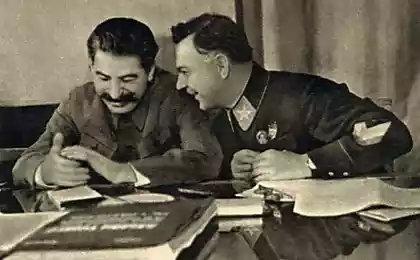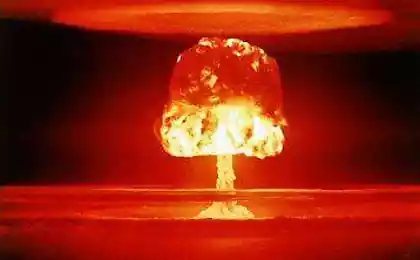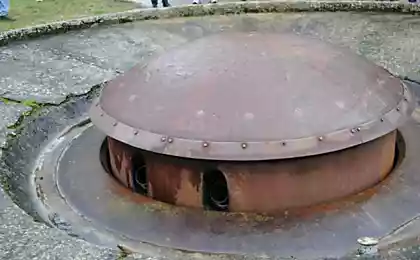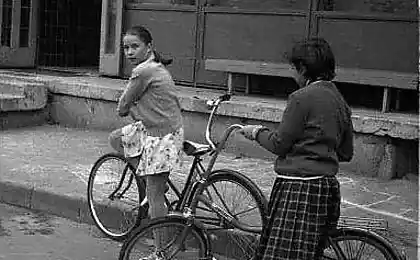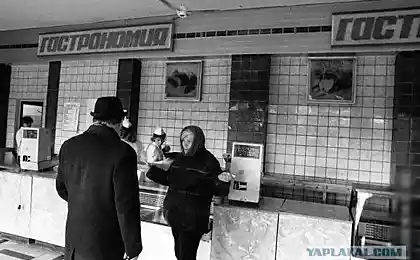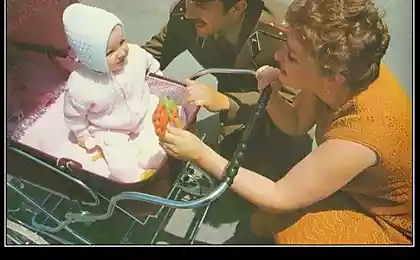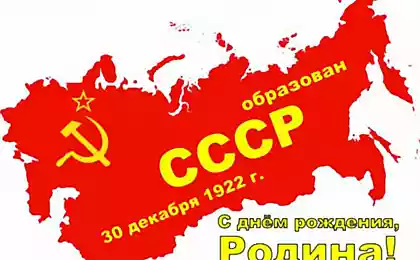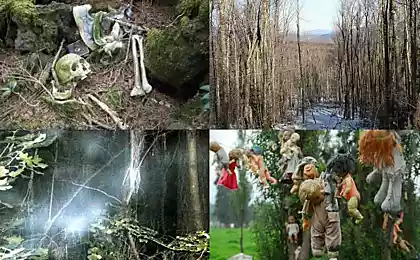1750
Great Plan for the Transformation of Nature
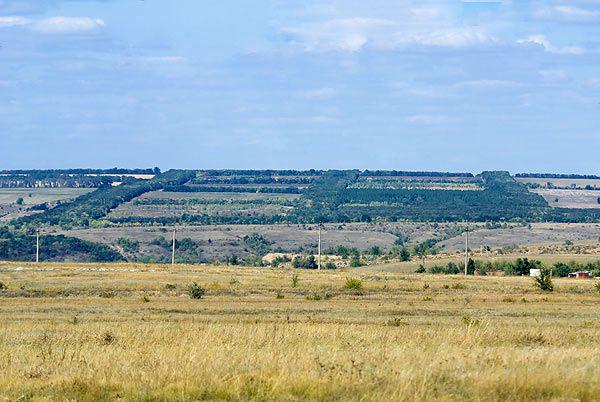
... If we carefully examine satellite images of the left, the north shore of the Seversky Donets below Kamensk-then in front of the village Coke can notice some strange parallel lines that go to the north. If we attempt to follow where they lead, the result is stunning - after going 600 km strip ends at the city of Penza ... The question immediately arises - what is it? Some secret line? Underpass for covert movements of tank divisions? Message from extraterrestrial civilizations?
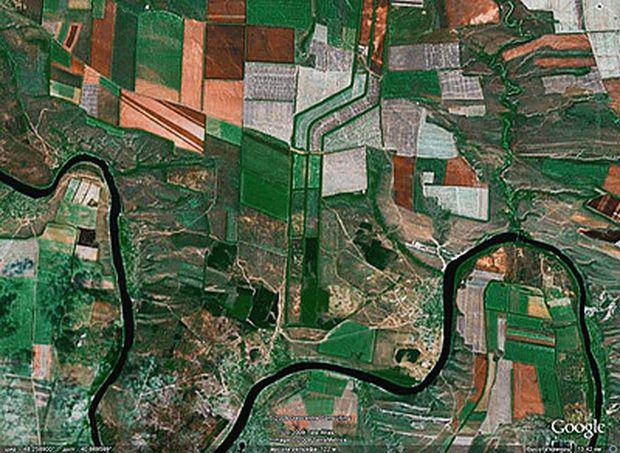
Start shelterbelts Kamensk-Penza
Not the first, not the second and third ... It - State shelterbelts ...
The Forest - a concept almost everyday: how much they won, along roads, around the perimeter of fields ... When you go from Rostov to Volgodonsk, intermittent flashing of these narrow strips of tree planting even a bit annoying ... And their presence seems clear, obvious and somehow taken for granted ... But attentive person will pay attention to the fact that these plantations are planted around the same time - somewhere around 60 years ago ...
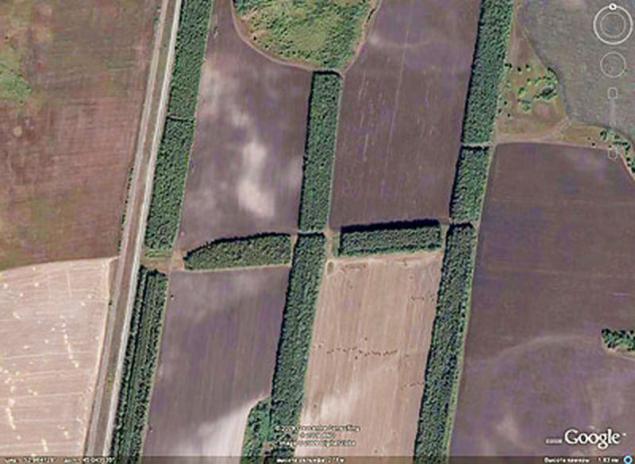
The structure of shelterbelts
Great Plan for the Transformation of Nature - a comprehensive program of scientific control of nature in the Soviet Union carried out in the late 1940s - early 1950s. The project is calculated for the period 1949-1965 gg., Called for the creation of 8 major bands in the state forest steppe and forest-steppe regions of the USSR, with a total length of over 5300 kilometers.
In accordance with this plan was to plant a forest strips, to block the road dry winds and climate change in the area of 120 million hectares, equal in England, France, Italy, Belgium and the Netherlands combined. The centerpiece of the plan took a field-protective afforestation and irrigation.
The plan also includes the introduction of grass farming system developed by outstanding Russian scientist Dokuchaev, Kostychev and VR Williams. Under this system, a part of arable crop rotation inoculated legumes and perennial grasses Poa. Herbs were fodder for livestock and natural means of restoring soil fertility. The plan called for not only the absolute food self-sufficiency of the Soviet Union, but also to build the second half of the 1960s, exports of domestic grain and meat products. By forest belts and ponds were significantly diverse flora and fauna of the USSR. Thus, the plan combined the objectives of environmental protection and sustainable produce high yields.
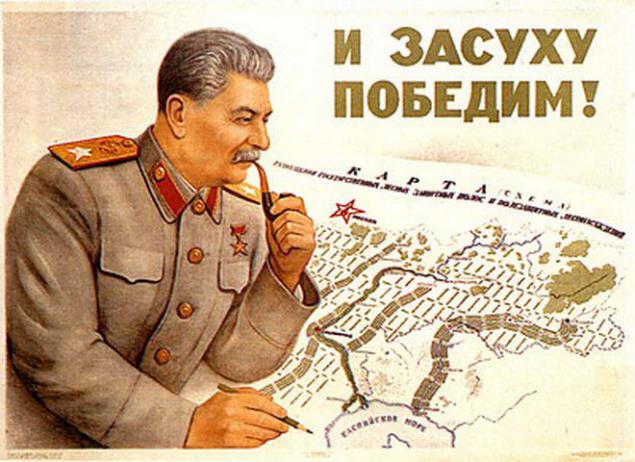
Poster of those times
Implemented measures resulted in increased grain yield by 25-30%, vegetables - by 50-75%, herbs - by 100-200%. As a result of increased investment in agriculture and improving the technical equipment of collective and state farms have managed to create a strong food base for livestock development (significant role played in this machine and tractor stations). Production of meat and fat in 1951 compared to 1948 increased by 1, 8 times, including pork - 2, milk - 1, 65 eggs - 3, 4, wool - 1, 5 .

State shelterbelts Penza-Kamensky.
... After World War II, in 1946, our country perceives another problem - a terrible drought ... The country is starving. To protect themselves from similar disasters in the future, 20 October 1948 the Council of Ministers of the USSR and the Central Committee of the CPSU (b) adopted a resolution "On the plan of shelterbelts, the introduction of grass crop rotation, construction of ponds and reservoirs to ensure high crop yields in the steppe and forest-steppe regions of the European USSR ", later known as the" Great Plan for the Transformation of Nature. "
It was the first in the history of humanity's biggest environmental program impact on climate vast territory, designed to permanently protect fertile agricultural land from the destructive dry winds, dust storms, lack of moisture and soil erosion ...

Some details stagger the imagination: The plan was designed for 15 years. During this time it was planted about 2 million. Hectares of shelterbelts, the total length exceeds 5000 km, and the direction is designed in such a way as to block the path of the south-eastern dry winds.
In addition, the following outputs on the organization of grassland farming systems mentioned above:
• planting of shelterbelts on watersheds on the Limits of the fields of crop rotation, on the slopes and ravines, on the banks of rivers and lakes around the ponds and reservoirs, as well as afforestation and sand fixation;
• regular system of tillage, crop tending and especially widespread use of black vapor, plowed fields and stubble breaking;
• regular system of organic and mineral fertilizers; sowing the seeds of selected high-yielding varieties adapted to local conditions;
• Development of irrigation water use based on local runoff by building ponds and reservoirs.
The first forest area, 100 meters in width and a length of 900 kilometers is from Saratov to Astrakhan along both banks of the Volga River.
The second, 600-kilometer forest area, Penza - Kamensky, consists of 3 parallel belts width of 60 meters at a distance of 300 m from each other.
The third zone, Kamyshin - Volgograd is 170 km in length, located in the watershed of the Volga and Ilovlya is similar in structure to the Penza-Kamensky.
The fourth zone, protyazhennostyu 580 km from Chapayevsk (near Samara), to Vladimirovka-on-Volga. Consists of 4 parallel belts 60 meters wide and 300 meters from between the bars.
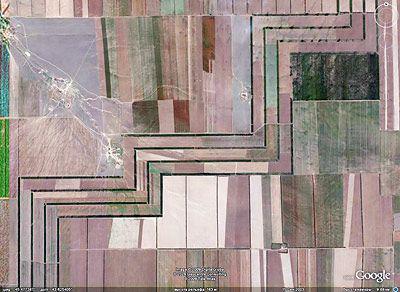
Four bands fifth of the forest zone
Conclusion.
By 1952, the system has been basically established and started to work. Quality agricultural land, protected forest belts, has increased markedly - reduced erosion, improved water balance, and as a result, increased productivity of the fields ... But the pace of work by 1952 slowed. In 1956, the program was is minimized, although originally designed before 1965.
With the death of Stalin in 1953, implementation of the plan has been minimized. Many forest plantations have been cut down, a few thousand ponds and reservoirs, which are intended for breeding fish were abandoned, created in the years 1949-1955 570 forest protection stations were eliminated on the orders of Khrushchev.
One consequence of the coagulation of the plan and the implementation of extensive methods to increase arable land was that in 1962-1963 years. there was an ecological disaster associated with soil erosion on virgin soil, and in the Soviet Union broke the food crisis. In the autumn of 1963 disappeared from the shelves of bread and flour, became irregular with sugar and butter. In 1962, it was announced a price increase for meat by 30 percent, and oil - by 25 percent. In 1963, as a result of crop failure and lack of reserves in the country for the first time the Soviet Union after the war, sold 600 tons of gold from the reserves, bought about 13 million. Tons of grain abroad.
--img8--

